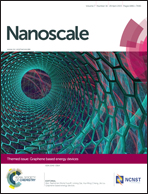The shear response of copper bicrystals with Σ11 symmetric and asymmetric tilt grain boundaries by molecular dynamics simulation†
Abstract
Grain boundaries (GBs) are important microstructure features and can significantly affect the properties of nanocrystalline materials. Molecular dynamics simulation was carried out in this study to investigate the shear response and deformation mechanisms of symmetric and asymmetric Σ11<1 1 0> tilt GBs in copper bicrystals. Different deformation mechanisms were reported, depending on GB inclination angles and equilibrium GB structures, including GB migration coupled to shear deformation, GB sliding caused by local atomic shuffling, and dislocation nucleation from GB. The simulation showed that migrating Σ11(1 1 3) GB under shear can be regarded as sliding of GB dislocations and their combination along the boundary plane. A non-planar structure with dissociated intrinsic stacking faults was prevalent in Σ11 asymmetric GBs of Cu. This type of structure can significantly increase the ductility of bicrystal models under shear deformation. A grain boundary can be a source of dislocation and migrate itself at different stress levels. The intrinsic free volume involved in the grain boundary area was correlated with dislocation nucleation and GB sliding, while the dislocation nucleation mechanism can be different for a grain boundary due to its different equilibrium structures.


 Please wait while we load your content...
Please wait while we load your content...